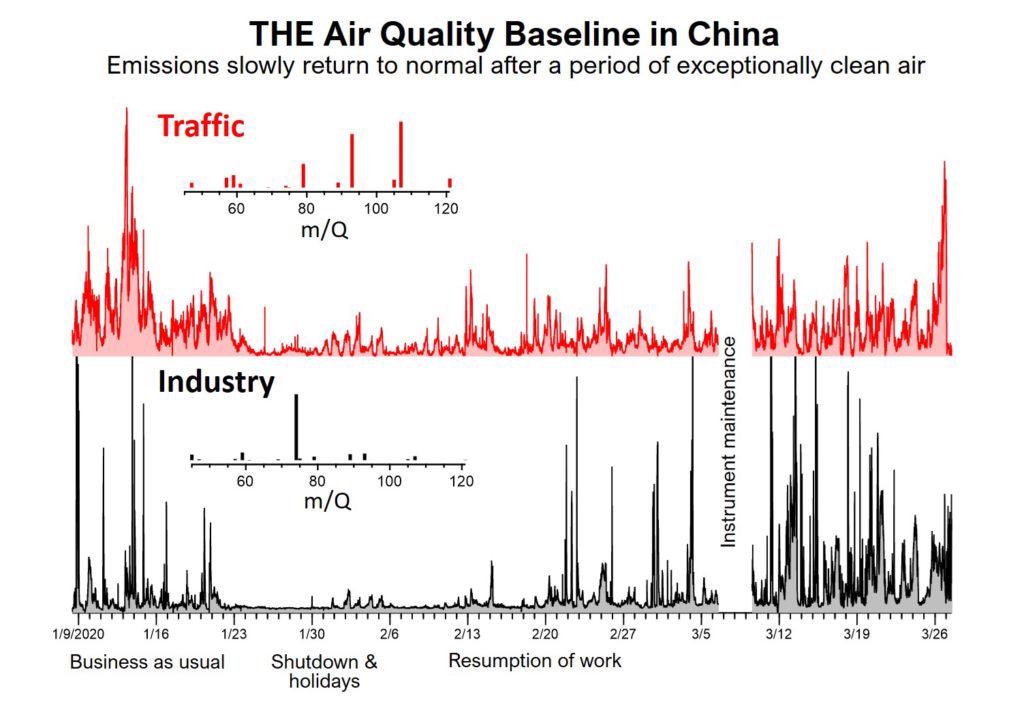
Earlier this year, we posted measurements of ambient volatile organic compound (VOC) concentrations in a Chinese megacity during the period including the initial coronavirus outbreak and the Chinese New Year. Slowdown in human activity led to massive reductions in VOC emissions – revealing local air quality baselines. Here we update the dataset to include more recent measurements, showing how VOC concentrations again changed as transportation and industry slowly came back online.
The ambient concentrations of VOCs were measured by a Vocus Elf PTR-TOF in a megacity in eastern China from January 9 – March 27, 2020.
Factor analysis of this dataset shows a period of unusually low emissions and clean air during the Chinese New Year holiday and shutdown due to Coronavirus, followed by a slow return to normal. Traffic and industrial emissions decreased substantially during the Chinese New Year Holiday and after a government-issued advisory concerning coronavirus. Ambient total VOC concentration fell by more than 50% from the average during the “business as usual” time period (9 Jan to 16 Jan), and traffic and industrial emissions decreased by 87% and 72%, respectively.

Satellite measurements indicate that cities all over the world are experiencing similar decreases in pollution, as local governments restrict movement in an effort to slow the spread of Coronavirus. Air pollution is estimated to contribute to seven million premature deaths per year worldwide, and is a major factor in acute and chronic respiratory disease (World Health Organization). The dramatic improvement in air quality in cities worldwide is an unexpected relief for those suffering from respiratory illness – right at a time when it is most needed. This unintended “experiment” provides scientists a unique and unparalleled opportunity to understand the interplay of pollution sources, meteorology, chemistry, and public policy.